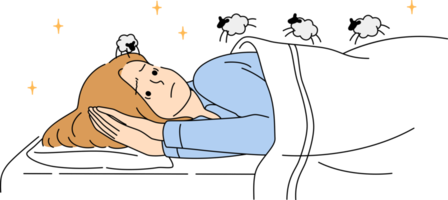Insomnia is a widespread condition that affects millions of people worldwide. Characterized by difficulty falling asleep, staying asleep, or waking up too early, insomnia significantly impairs daily functioning. While lifestyle changes and cognitive-behavioral therapies remain the cornerstone of long-term treatment, pharmaceutical interventions play a crucial role in managing short-term or acute episodes. One such medication is Eszopiclone 3 mg, also available under the brand name Hypnite 3 mg.
This article explores Eszopiclone 3 mg in depth — its mechanism of action, uses, benefits, precautions, side effects, and how it differs from other sleep aids. It is written in active voice, with clear and direct explanations.
What Is Eszopiclone?
Eszopiclone is a prescription medication used primarily to treat insomnia. It belongs to a class of drugs known as non-benzodiazepine hypnotics or “Z-drugs.” Unlike traditional benzodiazepines, Eszopiclone works selectively on brain receptors to induce sleep without causing significant sedation the next day.
Pharmaceutical companies market Eszopiclone in various forms, with 3 mg being the standard dose for adults experiencing moderate to severe insomnia. Hypnite 3 mg is a common generic version containing the same active ingredient.
How Does Eszopiclone Work?
Eszopiclone acts on the gamma-aminobutyric acid (GABA) receptors in the brain. GABA is the brain’s primary inhibitory neurotransmitter. When Eszopiclone binds to GABA-A receptor subtypes, it enhances GABA’s natural calming effect. As a result, neuronal activity slows down, helping the brain enter a sleep-ready state.
Unlike benzodiazepines, Eszopiclone shows greater selectivity, reducing the risk of next-day grogginess. The drug helps users:
- Fall asleep faster
- Stay asleep longer
- Reduce nighttime awakenings
- Improve sleep quality
The effects usually begin within 30 minutes of ingestion and can last 6 to 8 hours.
Who Should Use Eszopiclone 3 mg?
Doctors typically prescribe Eszopiclone 3 mg for adults experiencing short-term insomnia. This includes:
- Jet lag
- Acute stress or anxiety
- Change in sleeping environment
- Medical conditions causing sleep disruption
The 3 mg dose is especially effective for people who have tried lower doses without sufficient benefit.
Benefits of Eszopiclone 3 mg
1. Rapid Onset of Sleep
Eszopiclone starts working within 30 to 60 minutes, helping users fall asleep quickly. People with sleep-onset insomnia often benefit from this feature.
2. Improved Sleep Duration
The 3 mg dose extends total sleep time, aiding individuals who wake up in the middle of the night or too early.
3. Minimal Next-Day Sedation
Unlike many sedatives, Eszopiclone minimizes next-day drowsiness due to its selective binding properties.
4. Safe for Short-Term Use
When used as prescribed, Eszopiclone 3 mg provides a low risk of dependence compared to traditional sleeping pills.
5. Well-Tolerated
Most users experience few side effects when they follow dosage guidelines and avoid mixing with alcohol or other depressants.
How to Take Eszopiclone 3 mg
Doctors usually recommend taking one 3 mg tablet of Eszopiclone right before bedtime. Important administration guidelines include:
- Take the tablet on an empty stomach
- Avoid alcohol or other CNS depressants
- Ensure a full night’s sleep (7–8 hours) ahead
- Do not drive or operate machinery after ingestion
- Only take the medication when sleep is possible immediately
Taking Eszopiclone when not ready for bed may cause short-term memory gaps, unusual behaviors, or confusion.
Duration of Use
Eszopiclone 3 mg is approved for short-term use, typically 7 to 14 days. Some patients may use it longer under close supervision. Chronic use increases the risk of:
- Tolerance
- Dependence
- Rebound insomnia
Doctors reevaluate patients regularly to ensure continued benefit and to prevent long-term reliance.
Side Effects of Eszopiclone
Though most people tolerate Eszopiclone well, it can cause side effects. Common side effects include:
- Dizziness
- Dry mouth
- Unpleasant taste
- Headache
- Drowsiness
Less common but serious side effects may include:
- Complex sleep behaviors (e.g., sleep-driving, sleep-eating)
- Depression or suicidal thoughts
- Memory problems
- Hallucinations
- Allergic reactions (rash, swelling, difficulty breathing)
If these effects occur, users must seek medical help immediately.
Who Should Avoid Eszopiclone?
Certain individuals should avoid Eszopiclone 3 mg, including:
- Children and adolescents
- Pregnant or breastfeeding women
- People with a history of substance abuse
- Patients with severe liver impairment
- Individuals with sleep apnea
- Those allergic to Eszopiclone or related drugs
Doctors perform a comprehensive evaluation before prescribing this medication.
Eszopiclone vs. Other Sleep Aids
Eszopiclone competes with several other sleep medications, including:
| Medication | Class | Duration | Onset | Tolerance Risk |
|---|---|---|---|---|
| Zolpidem (Ambien) | Z-drug | Short | Fast | Moderate |
| Temazepam | Benzodiazepine | Intermediate | Moderate | High |
| Diphenhydramine | Antihistamine | Short | Slow | Low |
| Melatonin | Supplement | Short | Slow | Very Low |
| Eszopiclone | Z-drug | Long | Fast | Moderate |
Eszopiclone stands out for its balance between efficacy and safety. It works fast, lasts long enough to sustain sleep, and has fewer side effects than older drugs.
Is Hypnite 3 mg the Same as Eszopiclone 3 mg?
Yes, Hypnite 3 mg contains Eszopiclone as its active ingredient. It functions identically to branded versions such as Lunesta. The difference lies primarily in:
- Manufacturer
- Cost
- Packaging
Hypnite 3 mg offers a cost-effective alternative for people needing Eszopiclone but unable to afford premium brands.
Drug Interactions
Eszopiclone interacts with various substances, including:
- Alcohol
- Opioids
- Antidepressants
- Antipsychotics
- Antifungal medications (e.g., ketoconazole)
- Antibiotics (e.g., clarithromycin)
These substances can increase the sedative effect or raise blood levels of Eszopiclone, increasing risk of overdose or severe side effects.
Precautions to Take
Before starting Eszopiclone, users should:
- Share their full medical history
- Avoid abrupt discontinuation
- Use the medication only under supervision
- Never share it with others
- Monitor for side effects, especially in the elderly
Doctors may start with a lower dose in elderly patients due to increased sensitivity.
Rebound Insomnia and Withdrawal
Stopping Eszopiclone suddenly, especially after long-term use, can lead to rebound insomnia—a temporary worsening of sleep difficulties. Some individuals may also experience:
- Anxiety
- Irritability
- Muscle tremors
- Fatigue
To minimize withdrawal effects, doctors may recommend tapering the dose slowly.
Safe Storage and Disposal
Keep Eszopiclone 3 mg in a cool, dry place away from sunlight and moisture. Always store it out of reach of children and pets. Never flush leftover tablets; instead, return them to a local pharmacy’s drug take-back program.
Frequently Asked Questions
1. Can I take Eszopiclone every night?
You can take it nightly for a short time (7–10 days), but long-term use should only occur under medical supervision.
2. Will Eszopiclone make me feel ‘high’?
At prescribed doses, it induces relaxation and sleep. Misuse at high doses can produce euphoria, leading to abuse and dependence.
3. Can I use Eszopiclone with melatonin?
It’s best to avoid combining them unless a doctor approves. Both promote sleep and may amplify sedative effects.
4. Does Eszopiclone affect memory?
Some users report short-term memory lapses, especially when staying awake after taking the pill.
5. Can I build a tolerance to Eszopiclone?
Yes. Over time, the body may adapt, making the medication less effective. This is why it’s used short-term.
Conclusion
Eszopiclone 3 mg, also known by the brand Hypnite 3 mg, offers a powerful, fast-acting, and generally safe option for managing short-term insomnia. It helps users fall asleep quickly, stay asleep longer, and wake up feeling rested.
However, like all sleep medications, Eszopiclone must be used responsibly. Medical supervision ensures safe dosing, minimizes the risk of dependence, and tailors treatment to individual needs. For those struggling with persistent insomnia, it can provide the relief needed to regain normal sleep patterns and improve quality of life.







